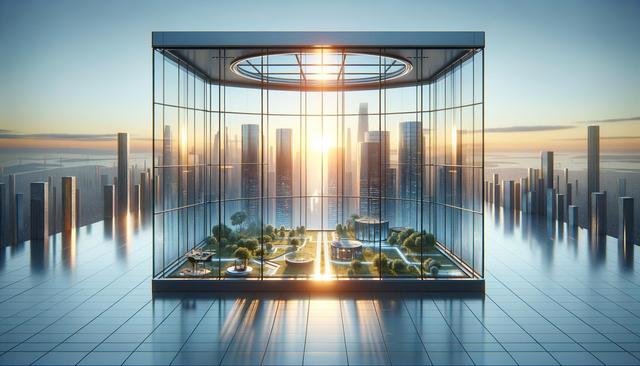
Window Replacement Trends to Watch in 2025
Energy Efficiency Takes Center Stage
One of the defining themes of window replacement in 2025 is the emphasis on energy efficiency. As homeowners continue to prioritize lowering utility costs and reducing environmental impact, manufacturers are responding with advanced glazing techniques and innovative insulation technologies. Multi-pane glass options, often filled with inert gases like argon or krypton, are becoming increasingly standard, offering superior thermal performance compared to traditional single or even double-pane models.
Additionally, low-emissivity (Low-E) coatings are more sophisticated, reflecting heat during summer months while retaining warmth in winter. This helps maintain consistent indoor temperatures year-round. New frame materials, such as composite and fiberglass, also contribute to overall efficiency by minimizing thermal bridging and enhancing durability. Popular features in 2025 energy-efficient windows include:
- Triple-pane glass with inert gas fills
- Advanced Low-E coatings with adjustable tint
- Thermally broken frames for reduced heat transfer
- Smart sensors to monitor and optimize energy use
Choosing windows with high energy performance ratings not only improves comfort but also aligns with increasingly stringent building codes and sustainability goals.
Bolder Design Choices and Customization
While functionality remains key, aesthetics are playing a larger role in window design trends this year. Homeowners are moving beyond standard shapes and finishes, opting instead for bold, customized designs that reflect individual style. Larger window openings, floor-to-ceiling panels, and unique geometric shapes help create a seamless connection between indoor and outdoor spaces.
Dark-colored frames, especially in black and charcoal tones, are gaining popularity for their sleek, modern look that complements a wide range of architectural styles. Additionally, mixed materials such as aluminum-clad wood and powder-coated steel offer a blend of industrial and natural aesthetics. Key custom design trends include:
- Asymmetrical window layouts for visual interest
- Colorful or textured frame finishes
- Expanded glazing for panoramic views
- Minimalist designs with narrow sightlines
These elements allow homeowners to make a strong design statement while still benefiting from the practical advantages of durable, high-performance windows.
Smart Windows and Integrated Technology
Technology integration in window systems is evolving rapidly, and 2025 is seeing the widespread adoption of smart features that enhance convenience and control. Smart windows now offer automatic tinting based on sunlight exposure, built-in sensors for temperature and humidity, and connectivity to home automation systems. These innovations allow for real-time adjustments that improve comfort and efficiency without manual intervention.
Electrochromic glass, which changes transparency with a simple electrical charge, is becoming more accessible for residential projects. In addition, some systems offer smartphone or voice control, allowing users to remotely open, close, or adjust the tint of their windows. Common smart features in modern window replacements include:
- Self-tinting glass that responds to light levels
- Window locks controlled via mobile apps
- Integrated blinds or shades that adjust automatically
- Energy usage data tracking and reporting
These advancements not only contribute to a more comfortable living environment but also support security and energy management goals, making them a popular option in both new builds and renovations.
Sustainable Materials and Eco-Friendly Choices
As environmental awareness continues to influence consumer choices, sustainable materials are becoming a priority in window replacement projects. Many manufacturers are now offering products made from recycled materials or using processes that reduce waste and emissions. Wood alternatives like composite and polymer-based frames deliver the appearance of natural materials without the associated upkeep or environmental impact.
Certifications such as FSC (Forest Stewardship Council) and ENERGY STAR remain important indicators of sustainability, signaling that products meet specific environmental standards. Moreover, some window companies are adopting circular design principles, ensuring components can be disassembled and reused at the end of their lifecycle. Eco-friendly features to look for include:
- Frames made from recycled aluminum or fiberglass
- Low-VOC finishes and adhesives
- Cradle-to-cradle certified components
- Windows designed for easy disassembly and recycling
Choosing sustainable window options not only benefits the environment but also contributes to healthier indoor air quality and long-term value in the home.
Flexible Functionality and Adaptive Designs
Functionality is evolving to meet the diverse needs of modern lifestyles. In 2025, window designs are increasingly incorporating flexible features that adapt to different uses and environments. Operable panels that improve ventilation, tilt-and-turn mechanisms for easier cleaning, and modular systems that allow for phased installations are becoming more common.
Homeowners are also seeking multipurpose window systems that serve as both architectural elements and practical solutions. For example, pass-through windows between kitchens and outdoor entertaining areas are being used to enhance indoor-outdoor living. Other functional trends include:
- Integrated screens that retract seamlessly
- Windows that double as doors in compact spaces
- Modular systems for phased renovations
- Noise-reducing technologies for urban settings
These innovations support a more flexible and adaptive approach to design, making it easier to tailor window installations to specific needs without sacrificing aesthetics or performance.
Conclusion: Planning Your Window Upgrade
Keeping up with window replacement trends in 2025 means balancing aesthetics, efficiency, and smart functionality. Whether you’re renovating a single room or building an entirely new home, today’s window options offer a wide range of features that cater to both style and sustainability. By understanding the latest materials, technologies, and design possibilities, homeowners can make informed decisions that enhance comfort, reduce energy use, and support long-term property value. Consider consulting with a professional to assess your specific needs and explore how these emerging trends can be incorporated into your next project.


